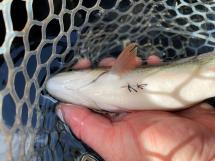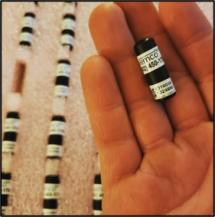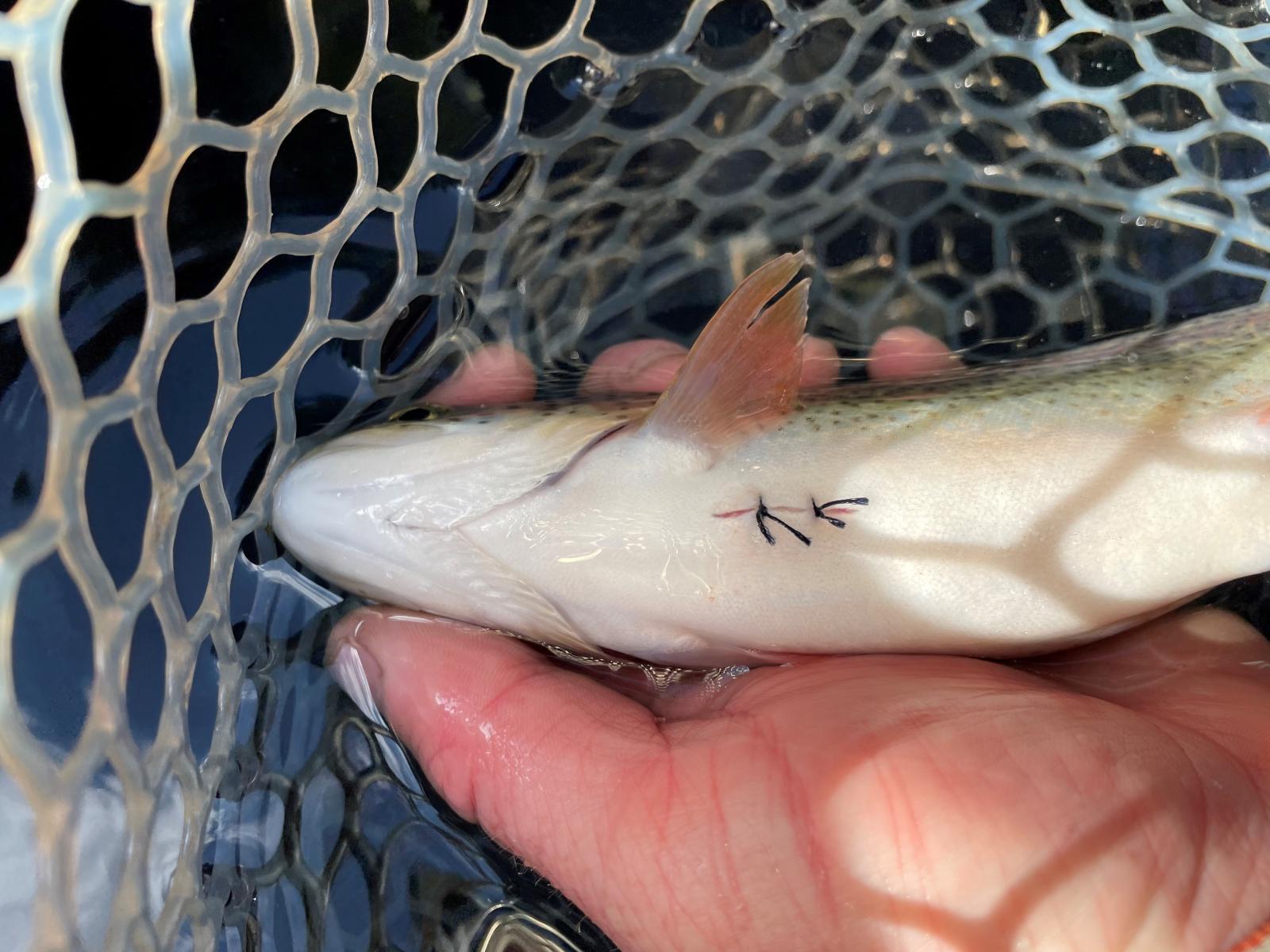ARCHIVED NEWS RELEASE
This document is provided for archival purposes only. Archived documents
do not reflect current WDFW regulations or policy and may contain factual
inaccuracies.
News release June 29, 2023
Contact: Nick Vanbuskirk, Montesano (Region 6), 360-490-9372
Media contact: Mark Yuasa, 360-902-2262

OLYMPIA – Washington Department of Fish and Wildlife (WDFW) biologists are asking anglers to release all sea-run cutthroat trout with a suture on the belly in rivers and marine waters of Willapa Bay now through spring of 2024.
WDFW is conducting a study to better understand the pattern of movements as sea-run cutthroat trout in Willapa Bay transition from freshwater to marine water.
Each fish has an acoustic tag inserted in their belly. Anglers are asked to look for stitches on the belly to determine if the fish has a tracking tag and release it immediately. Around 200 adult sea-run cutthroat trout will be captured and tagged in Washington and British Columbia now through spring of 2024.
Studies in areas like Hood Canal suggest migration patterns are restricted to their natal fjord. Other locations such as southern Puget Sound and the Columbia River revealed more distant migration. These conflicting results and an absence of information for the Washington coast are important for management of this native salmonid.

“The study this summer aims to identify inter-habitat (freshwater, estuarine, and nearshore) movements, and the role temperature, salinity, tide, and barriers (dams and culverts) play in determining movement patterns,” said Nick Vanbuskirk, a WDFW fish biologist. “Regional biologists will also be exploring fine scale movement of fish in the nearshore marine environments with a focus on improving fishing opportunity.”
Anglers who catch and release a tagged sea-run cutthroat trout, should call WDFW at 360-490-9372. For fishing regulations in various Willapa Bay rivers, go to the WDFW webpage.
The Washington Department of Fish and Wildlife works to preserve, protect, and perpetuate fish, wildlife and ecosystems while providing sustainable fish and wildlife recreational and commercial opportunities.
